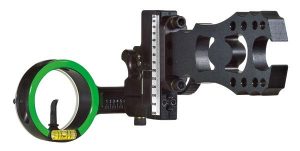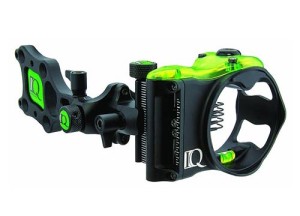Why I Switched BACK to a Fixed Pin Bow Sight
In 2016 I switched from a fixed pin sight to a one pin “slider” sight. That year I harvested a bear, deer, and an elk. I was sold on a one-pin sight, and for good reason. (Here’s the link to that article).
Then, in 2017, halfway through the deer hunt, my slider broke. The gears simply stripped out. Thankfully I had my backup bow in camp and was able to swap back to my old multi-pin sight.
When I got home I bought a slider sight and used it for a while, but it didn’t stick. Eventually I went back to my fixed pin sight and never looked back. In this article we’ll look at the pros and cons of using a fixed-pin (multi-pin) bow sight.

Fixed Pin Sight Pros:
- Fixed pin sights work with all bows and draw weights. But lower poundage bows aren’t always compatible with sliders. Especially at longer distances (usually over 60 yards) the sight housing adjust lower and lower until it actually comes into contact with the arrow or fletchings. What good is a single pin sight that can’t be dialed over 60 yards? This was the main issue I had while using a single-pin sight on my 60-pound hunting bow.
- Unlike single pin sights, multi-pins don’t require extra hand movement when adjusting for moving targets. One-pin sights are great for stationary targets, but in the thick stuff you have to be ready for anything. Once you draw your bow, it’s not possible to readjust the sight if the animal moves, especially if it’s moving rapidly toward or away from you. Animals that move a lot—like bear, javelina, and turkey—are especially problematic with one pin sights. When hunting open terrain or when dealing with longer yardages—say 40 yards or more—movement isn’t a big issue because the animal is less likely to notice.
- Fixed-pin sights don’t have moving parts. Once you’re sighted in, you just tighten down the screws and go. Moving parts can wear out or break easier than stationary parts. That’s what happened to me; my slider simply stripped out from normal use. And on a hunt no less! This is not acceptable.
- Fixed-pin sights tend to be lighter than single pin sights. Slider sights with lots of working parts tend to be heavier than fixed pin sights. Of course accessory weight isn’t a big issue unless you’re already lugging around a heavy aluminum bow, or if you’re a backcountry bowhunter where weight is always an issue. Both apply to me, so using a lighter sight is better. My bare bow already weighs nearly 4.7 pounds, so accessory weight is a real issue. BTW, my favorite lightweight sight is the TruGlo Carbon XS Xtreme carbon-composite bow sight. At 4 ounces it weighs half as much as my old slider.
Now for the cons.
Fixed Pin Sight Cons:
- The pins in a fixed sight take up more space in the sight picture. A long row of pins is not only distracting, but can block much of an animal’s vitals. It’s much easier to place a single pin on a small target than to wade through multiple pins, especially in a high-stress situation. However, using smaller diameter pins (.019 or smaller) mostly solves this problem
- Shooting between the pins (aka pin gapping) takes practice. If you’re shooting heavy arrows and/or pulling a light draw weight, the pins on a multi-pin sight will be spaced widely apart. So shooting odd-yardages means shooting between the pins. This takes some practice to get use to. It’s much easier to just dial up the exact yardage and hold the pin on the target.
- Selecting the right pin under pressure can lead to mistakes. This was the reason I switched to single pin sight in the first place. It’s rare that I select the wrong pin, but it can happen. And the more pins you have, the easier it is to make mistakes. That being said, mistakes are just as common with a slider sight. Anyone who has used a slider will admit to forgetting to move the pin from time to time. Mistakes happen with both sights.
Conclusion
There are pros and cons to using single- or multi-pin bow sights. The decision should be based on the type of hunting you do, your personal bow setup, and most importantly the sight you’re most comfortable using in real hunting situations.
In tournament or target shooting, I prefer a slider. In open country where long shots are the norm, I would definitely go with a slider. But in heavy cover or backcountry use, I’m more comfortable with a multi-pin sight.
Six years ago I swore I’d never go back to a fixed pin sight, yet here I am. What’s the lesson here? Never say NEVER.


